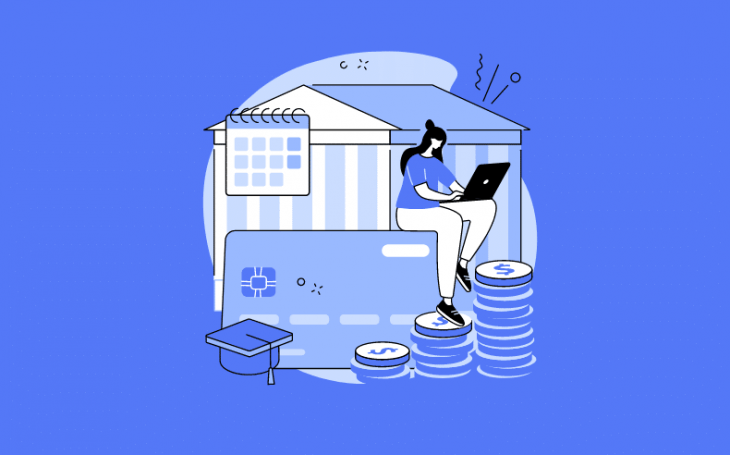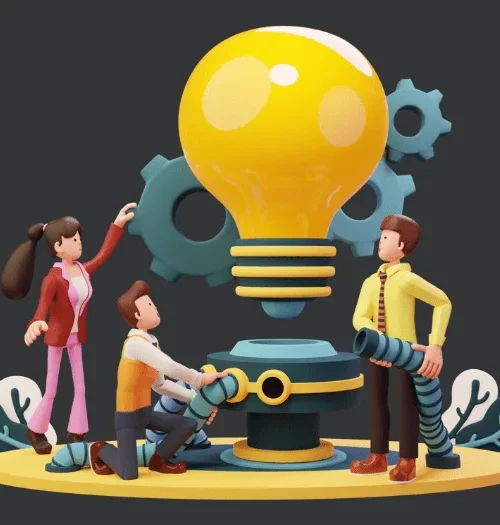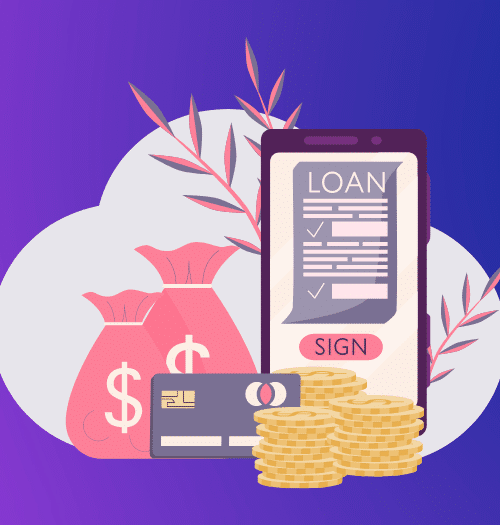How BNPL is the Next Big Thing for the Finance Future



Overview
Introducing the hottest trend in India and beyond: Buy Now Pay Later (BNPL). This game-changing concept has captured the hearts and minds of millions, creating a buzz that simply cannot be ignored.
The landscape of BNPL is evolving at lightning speed, engulfing not only banks but also Non-Banking Financial Companies (NBFCs) and fintech giants in its ever-expanding realm. It’s as if the entire lending industry has been awakened by the irresistible allure of this innovative payment solution.
We bring together the most influential players and industry experts in an exclusive webinar that unravels the secrets behind the “Rise of BNPL“. Brace yourself for an exhilarating journey where you gain unprecedented insights and insider knowledge straight from the experts themselves.
Categories of Speakers
- From an API Infrastructure perspective, we had Madhusudanan R, Co-Founder of M2P Fintech.
- From embedded finance and AA standpoint, we had Kumar Srivatsan, Founder of Fego.ai
- From a merchant and commerce standpoint, we had Chayan Hazra, Head of APAC-Payments Business of Pine Labs.
- From a new-age lending perspective, we had one Gorav Gupta, Co-Founder of DigiMoney Finance.
- Our moderator, Mani Parthasarathy, Co-Founder of CloudBankin
Panel Discussion
1. Mani: Let’s start the session by understanding India’s Buy Now Pay Later industry scenario and global perspectives.
Madhusudanan: Buy Now Pay Later is a concept that repackages the age-old idea of credit cards. While BNPL operates with subtle variations in different markets, its core premise remains unchanged: merchants are willing to sacrifice some profit margins to ensure sales by offering customers the option to pay in installments. Initially popularized in the United States, BNPL services tapped into segments that traditional credit cards couldn’t effectively address.
In India, the need for Buy Now Pay Later arose from a rapidly growing consumer credit market. Many individuals lacked a formal credit history, making it difficult for them to access loans from banks and financial institutions. These New-to-Credit (NTC) borrowers faced challenges in proving their creditworthiness without a credit score. BNPL emerged as a solution, breaking the cycle by providing credit opportunities, helping individuals meet their needs, and establishing their creditworthiness.
BNPL started as a credit-building tool in India and gradually expanded as more people entered the formal credit ecosystem. In established markets, it has become more of a product arbitrage. With its blend of innovation and familiarity, Buy Now Pay Later has generated significant interest and continues to reshape the financial landscape in the late 2010s and early 2020s.
Chayan: Take a journey through time, back to the Great Depression and the early 1900s when lending first took hold. Ads enticing customers with delayed payment plans for house paint, pianos, and sewing machines marked the birth of Buy Now Pay Later. Fast forward to the era of credit cards, where two crucial elements remained constant:
- the process of acquiring and delivering lending products, and
- the customer experience.
But questions began to emerge.
- Who had access to lending products?
- Were all lenders using the same underwriting data sets?
- Were they looking at alternate data sets to underwrite their customers?
Enter BNPL, ushering in the mobile-first age and simplifying customer underwriting while enhancing the user experience. In established markets like Japan, Australia, and the USA, credit card usage has hit a plateau, while the usage of BNPL has skyrocketed. As this unique product thrives in overbanked markets, BNPL’s growth trajectory is simply phenomenal.
Gorav: Let’s take a nostalgic trip down memory lane, where the roots of Buy Now Pay Later (BNPL) trace back to the days of neighborhood kirana shops. Picture this: customers strolling into the store, their names inscribed in the merchant’s pocket diary, enjoying the privilege of purchasing goods and settling their debts once they received their salaries. It was a harmonious arrangement, with zero cost to the customers and the merchants extending credit, granting customers greater purchasing capacity.
BNPL is the modern-day rendition of this age-old tradition, an evolution that elevates the customer experience to new heights. In this triparty arrangement, customers, fintech components, and merchants unite to unlock incredible purchasing power. As we delve into the untold story of BNPL, we unravel the transformative journey from humble kirana shops to a world of limitless possibilities, empowering customers and shaping the future of commerce.
Kumar:
I believe BNPL emerges as a powerful vehicle for financial inclusion, offering unparalleled ease of access and transforming the lending landscape. With its unique form factor, BNPL opens doors for underserved segments, providing opportunities previously untapped. The beauty of this product lies in its ability to cater to anyone, effortlessly meeting their needs. When implemented correctly, BNPL has the potential to not only build credit scores but also pave the way for individuals to access larger credit pipelines, establish their creditworthiness, and improve their financial behavior. It serves as the catalyst, propelling borrowers towards a brighter financial future, while revolutionizing the delivery of financial services.
2. Mani: Can you tell us the difference between credit cards and Buy Now Pay Later?
Madhusudanan:
- Credit cards are a well-established and structured product, with underwriting mechanisms based on customers’ income levels, determined by the business rules of financial institutions. On the other hand, Buy Now Pay Later offers greater flexibility and can be integrated into various products and platforms, such as food delivery apps or grocery stores. It operates as a merchant service, a fintech platform, or even as a strategic opportunity for banks to expand their customer base.
- Some private banks leverage BNPL as an entry product that serves as a stepping stone towards credit card adoption. Customers who initially engage with BNPL can gradually transition into credit card products, allowing them to build their credit profiles over time.
- BNPL acts as a bridge to the credit card business, offering a gateway to customers who might not have qualified for a credit card initially. It caters to the evolving needs of the new world, seamlessly integrating with merchant apps, card-based solutions, and even UPI or QR code platforms.
Chayan: To add one more point, unlike credit cards that operate with a minimum ticket size, BNPL provides credit even for smaller transactions. For instance, in Malaysia, BNPL offers credit for purchases as low as $15, whereas credit cards typically require a minimum ticket size of $150.
3. Mani: How does Buy Now Pay Later affect the payment industry from a merchant’s perspective?
Chayan:
- BNPL helps to increase a merchant’s basket size.
- It helps bring new customers who can’t afford to pay now but gradually over time for their purchases.
- Customers’ user experience is much easier, and depending on merchants, it makes it easier to pay for their purchases.
- If someone doesn’t have credit and wants to make purchases, with BNPL, it is technically possible to just register on the fly to get a credit line and avail to make his purchases. And merchants are willing to go that extra mile.
BNPL is such a cool thing that suddenly, everybody (from merchants to their customer and credit providers) are jumping into this bandwagon.
4. Mani: How an NBFC or a fintech incorporates Buy Now Pay Later into its lending business?
Gorav:
Buy Now Pay Later, a point-of-sale credit product, has emerged as a popular payment alternative, empowering millions of individuals worldwide to fulfill their essential needs. This widespread adoption has turned BNPL into a highly lucrative business opportunity, attracting fintech companies and NBFCs eager to claim their share of the market.
Launching a BNPL business is now within reach for companies with even a modest digital presence. It involves three key components:
- Identifying the Product, Customer, and Vendor: Collaboration with e-commerce platforms or retail chains helps determine the target audience and product offerings, whether it’s luxury goods or everyday consumer items.
- Developing the Technology: Creating an app to host the BNPL service, similar to CloudBankin, plays a crucial role in facilitating seamless transactions and user experience.
- Complying with Regulations: Operating within a regulated environment is paramount, as adherence to regulatory requirements, particularly those set by RBI, ensures a secure and trustworthy BNPL service.
5. Mani: What is the role of NBFC-AA in BNPL?
Kumar:
As Buy Now Pay Later has evolved, it’s always been a fight between quality and quantity with minimal friction. Challenges arise when
- When minimal underwriting is done to onboard a customer to use BNPL, resulting in higher credit costs because of the minimal availability of data.
- And also, it is difficult to have a 360-degree footprint of the customer because all the data sets pertain only to the asset of a bank or any financial institution.
The alternative to the above challenges of Account Aggregator (AA) is
- All the BNPL providers can access customers’ financial accounts via Account Aggregation Framework subject to their consent.
- It allows BNPL providers to state upfront how much data they want for how much time and their end-use.
There is a constant evaluation of the customers’ transactions activities. It is much richer and more authentic as providers have access to recent financial behaviour. Underwriting of a customer can pretty much be done sitting on top of the transaction data in real-time. And that opens a whole list of possibilities for BNPL lenders to push the envelope even deeper into the finance ecosystem.
6. Mani: Kumar, a follow-up question to your previous explanation. On the cost front, how much can it be reduced from an AA’s perspective?
Kumar:
In the evolving landscape of Buy Now Pay Later, the pricing model has become pay-as-you-use, providing upfront clarity on costs. Customer consent, data access, and retrieval frequency are all clearly defined, allowing for efficient underwriting and capped expenses. By leveraging transaction data, BNPL lenders can perform KYC and bureau scraping using customers’ mobile numbers, reducing costs while maintaining compliance. This streamlined approach makes the entire process highly economical, benefiting both lenders and customers in the ever-evolving BNPL ecosystem.
7. Mani: What is the role of banks in BNPL?
Madhusudanan:
Banks have multiple opportunities to participate in the Buy Now Pay Later space, offering unique advantages and collaborations:
- Capital Providers: Banks can serve as a valuable source of capital for BNPL providers, alleviating credit cost burdens. By extending their financial backing, banks contribute to the growth and sustainability of BNPL platforms.
- Co-Lending Partnerships: Banks can form strategic alliances with fintech BNPL providers to explore co-lending opportunities. This collaboration allows banks to share the risk with their fintech partners while providing them with access to lower-cost capital, ultimately benefiting the customers with more competitive rates.
- Independent BNPL Ventures: Some banks are considering developing their own BNPL models. By onboarding large corporate merchants, banks gain an opportunity to acquire NTC customers, expanding their customer base and fostering innovation within the banking sector.
8. Mani: What do the regulations look like from Buy Now Pay Later standpoint?
Gorav:
The regulatory stance on Buy Now Pay Later has been clarified by the Reserve Bank of India (RBI) in a circular issued in June 2022. The RBI specified that loading prepaid payment instruments (PPIs) using credit lines is not permitted under their existing framework. This affects fintech credit card companies that partner with banks or NBFCs to offer credit lines into prepaid wallets. Compliance with the RBI’s directives is crucial, and market participants must adjust their operations to ensure adherence to regulatory guidelines in the BNPL ecosystem.
9. Mani: How does Buy Now Pay Later help merchants?
Chayan:
- It helps to better the payment experience because most commerce is happening digitally now.
- It helps to bring NTC borrowers.
- And obviously, it brings in more customers, thereby increasing the basket size of a merchant.
10. Mani: What are the risks and challenges of BNPL?
Madhusudanan:
- Firstly, there is a balancing act between growth and how much loss a BNPL lender can stomach. Since it’s a credit business, credit is the biggest risk here.
- Secondly, BNPL is integrated with existing credit or debit cards, allowing customers to split payments or use BNPL entirely, with the transactions ultimately being linked to their credit card product. As a result, dedicated collection infrastructure is not typically in place for BNPL.
- Lastly, during times of inflationary pressures or economic crises, credit cards are often the first to face defaults. With the rise of BNPL, the risk of customers delaying interest payments or EMIs further complicates their overall debt situation. It is important to navigate these considerations effectively to ensure the sustainability and success of BNPL as a financial product.
11. Mani: With the rise of FinTech entities of size, scale, and consumer impact, how are the NPAs looking?
Gorav:
BNPL is an evolving industry at the moment and is currently in the very entry stage. It is too early to predict the NPA patterns.
12. Mani: How would you describe the role of technology in BNPL?
Chayan:
The evolution of technology has revolutionized every aspect of Buy Now Pay Later, including customer identification, onboarding, delivery, service marketing, engagement, and collections. By leveraging technology, BNPL providers have been able to minimize operational costs and streamline their processes. In India, the payment ecosystem is rapidly advancing towards becoming a robust digital infrastructure, further reducing costs and the need for manual intervention in the BNPL business. The integration of technology has significantly transformed the landscape of BNPL, making it more efficient and cost-effective.
13. Mani: How can NBFC-AA help strengthen the lifestyle of customers of BNPL lenders?
Kumar:
The AA ecosystem is revolutionizing lending by leveraging vast amounts of data. With over 1.1 billion accounts from public and private sector banks integrated into the ecosystem, the potential is immense. By linking a mobile number to a financial account and obtaining customer consent, BNPL lenders can track the credit life cycle of customers based on transaction activities, enabling them to prioritize top-ups, collections, and potential recoveries.
From the customer’s perspective, a single bank account or mobile number linked to multiple accounts serves as the gateway to the ecosystem. Similar to UPI, but focused on data instead of payments, the account aggregation initiative is becoming the world’s largest open banking venture. Transaction data, insurance information, and other wealth-related data sets provide BNPL lenders with a comprehensive 360-degree view of their customers using a simple mobile number. This transformative ecosystem is rapidly evolving, driven by regulatory efforts to share financial data, and holds immense potential for revolutionizing the lending landscape.
Ending Words
We hope you learned a lot from the experts in the field who shared their knowledge on Buy Now Pay Later. If you like this kind of content, remember to check back for more upcoming blogs from CloudBankin!
FAQs by Audiences
What impact will regulatory changes have on venture capital investments for fintech companies entering the BNPL space?
When starting a business, assess its nature, revenue potential, and the problem it solves. Despite regulatory concerns, regulations protect customers, mitigate risks, and prevent unfair advantages. Businesses thrive within regulated frameworks, scaling and innovating. Regions like China experienced similar situations, with unregulated sectors facing regulatory corrections. In India, credit consumption drives market evolution and improves living standards. Lending operates within a clear regulatory framework for clean operations. Venture capital accelerates fintech growth, especially in BNPL, as digital lending guidelines provide clarity and establish a definitive landscape.
How can credit assessment be done for NTC borrower or a borrower without any credit history when they are waiting at the point-of-sale system?
Fintechs in this region use alternate data sets to assess credit quickly, allowing customers to obtain credit lines within minutes. As the industry evolves, regulators may introduce comprehensive checks and frameworks, like debt-to-service ratio in Malaysia, to ensure responsible lending. The aim is to balance easy credit access with customer and institution interests. Technology is pivotal in enabling these advancements, reducing costs, and expanding underwriting capabilities.
Can borrowers be assessed accurately without traditional Bureau data, but by analyzing alternate data sources?
The ability to accurately underwrite a borrower using alternate data depends on various factors such as the risk associated with the product and the ticket size. For low-ticket products, a simple credit score may suffice, while higher ticket sizes require more complex underwriting processes that utilize alternate data and income estimation tools. Affordability and cost per file are important considerations in the underwriting process, and BNPL service providers can evaluate customers based on the nature of the product, distinguishing between need-based and luxury purchases. It's crucial for BNPL lenders to prioritize credit discipline rather than solely focusing on acquiring more borrowers.
How fast and reliable is the account aggregation network from the user's perspective?
The account aggregation network, from the user's perspective, is secure and reliable. It follows DEPA and Bank of India's regulations, obtaining user consent before sharing data. Account aggregators are blind pipes, unable to access shared data. Users provide credentials and consent, similar to payment flows. This eliminates sharing sensitive credentials or PDFs, reducing data misuse risks. Only regulated entities with certifications and audits access the network, ensuring privacy compliance and security. The framework prioritizes data privacy, removes centralized control, and offers a safe route for users to share transactions with trusted entities.
Can BNPL providers effectively segment customers based on their performance and address challenges in collections?
As the BNPL industry evolves, it is important for providers to focus on customer segments, while ensuring they stay true to the initial spirit of bringing credit to customers. Instead of replicating the situation with credit cards where multiple banks target the same limited customer base, the industry should aim to increase the overall pool of creditworthy customers. This can be achieved by continuously evolving technology, underwriting processes, onboarding methods, risk assessment, and collection strategies, all while reducing costs. By doing so, the industry can benefit merchants and the ecosystem as a whole.
Related Post

An Introduction To Credit Bureaus
What is a Credit Bureau? A company which collects information

Navigating the Regulatory Landscape: A Dive into Understanding NBFC Compliances
Overview Delve into the realm of financial compliance for Non-Banking

How Digitization in Loan Origination Process solves the challenges of Banks & NBFCs?
Loan Origination is when a borrower applies for a loan,
- Email: [email protected]
- Sales Enquiries: +91 9344243151
- HR Enquiries: +91 9080996576
Quick Links
Resources
© 2024 LightFi India Private Limited. All rights reserved.
(Formerly known as Habile Technologies)